
|
Lorna Mills and Sally McKay
Digital Media Tree this blog's archive OVVLvverk Lorna Mills: Artworks / Persona Volare / contact Sally McKay: GIFS / cv and contact |
View current page
...more recent posts
From Alpha Beta Data
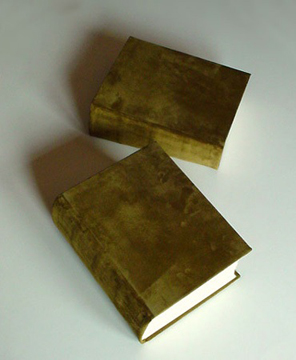
The Three Critiques of Immanuel Kant - Michael Maranda
two volumes of hand bound books
"In this project, I have taken the three critiques of Immanuel Kant (The Critique of Pure Reason, The Critique of Practical Reason, and The Critique of Judgment, in the 'standard' English translations) and collectively analyzed them. Volume 1 of this project consists of all the letters used in the three texts, arranged in alphabetical order. Volume 2 consists of all the punctuation and the numerals used in the three texts, in this case laid out on the page as they appear in the original texts."The economy of his description doesn't prepare you for the surprises within the work, and sometimes a description provides an inoculation from the real thing. A lot of Michael's art work deals with canonical works of western thought, using a subtle and sometimes freakish means of translation into the visual. (there's less of a gulf between our respective book art practises than is first apparent, but I'm an easier sell to an audience, since I flatten out the official cannon by giving it equal time with my middle-brow, low-brow, juvenilia & genre filled inventory from a promiscuous reading habit. Or translated into a fundamentalist p.o.v.: my intellectual sluttiness dirties everything I touch) Michael takes on a tougher problem that involves acknowledging a hierarchy in the universe of reading, and arguing with the structure of this medium that fills our thoughts, and even according to some, defines what a thought is supposed to be or how a thought will be manifested. (a philosophical problem that long ago bled into current thinking about A.I.)
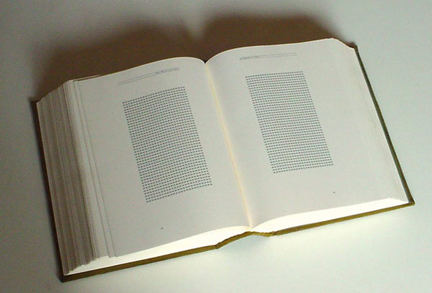
Volume 1, pictured above, with it's orderly arrangement of letters, type-set to look compressed within generous margins on each page, is obsessive and claustrophobic. On Friday night, at the opening, even the very thoughtful and patient Simon Glass admitted to me that he was unable to put Kant back together again. (the adjective, patient, applies here, because I always ask Simon inane questions whenever I see him, and he always answers them - thoughtfully: "No Lorna, I don't think I can put the Critique of Pure Reason back together for you")
The formatting for Volume 1 almost led me to dismiss the work because I am very lazy, but Volume 1's oppressiveness is a set up. Volume 2 (not pictured - go see the show) is absolutely breathtaking and unexpected.
It's ridiculously beautiful.
All the left-over punctuation, that now punctuates nothing but empty space, floats on all the pages like arabesques or musical notation. Maranda has used a slightly similar device in a previous work titled "Wittgenstein’s Corrections". In that piece, by using a source that reproduces Wittgenstein's handwriting, he retains the numbering system and the corrections, but leaves out the actual propositions from Tractatus Logico Philosophicus. (perhaps originally sourced from a copy of a galley-proof, but don't bother correcting me if I'm wrong)
From Yam Lau's essay on that work:
In the preface to the Tractatus Logico Philosophicus, Wittgenstein stated that the “whole sense of the book might be summed up in the following words: what can be said at all can be said clearly, and what we cannot talk about we must pass into silence.” Thus the aim of the Tractatus is to draw a limit to the expressions of thought, which lies within language.
From Alpha Beta Data
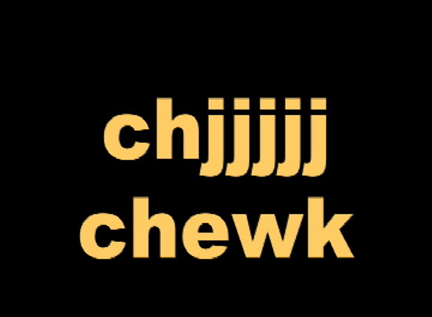
video still from "Common Birds of Southern Ontario" - Vid Ingelevics
"Common Birds of Southern Ontario is based on the premise of a lesson in learning to identify birdsong gone amok. This short video work combines several kinds of 'objet trouvées' - the floating, gimmicky titling options of Apple's video editing programme, iMovie, the recorded sounds taken from a birdsong audio CD, and the mysterious written texts derived from those sounds as found in bird-watching guidebooks."
From Alpha Beta Data opening Friday.
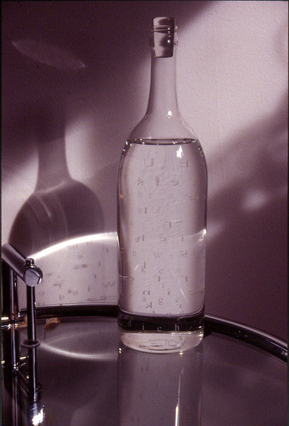
In the River, North of the Future - Yam Lau
The glass book is produced for The Box, a bookstore located by the Seine in Paris that publishes artists' books. The glass book is created to commemorate the poet Paul Celan, who drowned himself in the Seine. Celan, who characterized his poems as "a message in the bottle", inspired the form. On the outer surface of the bottle is etched, in reverse, Celan's last poem Rebleute Graben. The etched text is projected within the water of the bottle.From After The Disaster by Stephen Mitchelmore:
...German culture was the pinnacle of Western civilisation. It promised something better than feudal sniping. Inspired by his mother's deep love for it's poetry, he wrote lyric poems in the tradition of Hölderlin and Rilke. It is said that as a youth he had a remarkable affinity for it too. His taste moved him toward the contemporary symbolist and surrealist movements, and despite his polylingual abilities, he always wrote his poetry in German; his muttersprache.
Then war came. Celan was, by chance, separated from his parents on the day the Nazis arrived and deported the city's Jews. He never saw his parents again. They were taken to a Ukrainian labour camp. His father died of disease; his mother was shot. After this, as Hugo Gryn said, Celan was in the position of being a writer in the language of his mother and of his mother's murderers. He could not renounce the latter's language without renouncing the former's. Celan was robbed of his parents' death as well as their lives. Bonnefoy implies the same goes for his müttersprache.
"We can say of Celan as of no other poet: his words did not recover his experience. The loss was felt," he says, "like a discharge without origin or end." And as a result: "nothing real could authentically respond to this flux or be its equal, in the absolute, as referent: only the river itself … seems to fold in on itself (losing itself) like the only thing signified on the scale of so much absence."
Yam also created the animation of wafting drapes for this project directed by Andy Patton in memory of the Russian poet Osip Mandelstam, a victim of Stalin's purges.
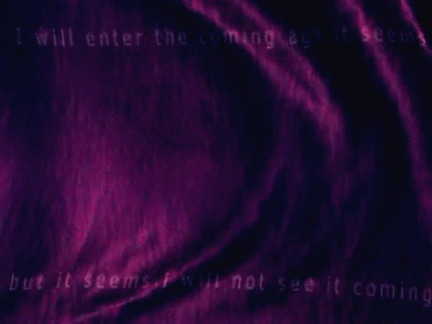
video still from "A Wind is Perpetually Blowing From The Future" - Andy Patton
I will enter the coming age it seems
but it seems I will not see it coming
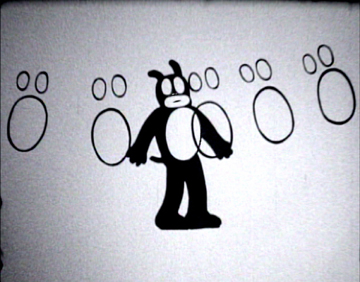
still from the super 8 animation 'Cypher' by Tanya Read
"In a time of conflict, a time of desperation, a new hero will arise.... A character so pathetic, so persistant, so void of emotion, there can be only one.....Mr. Nobody! Starring in the new ultimate action adventure tragedy comedy, Cypher. Screening this weekend only at the Theatre of Nobody.
Come on down to the Alley Jaunt this weekend at Trinity Bellwoods Park, Aug. 12 -13, 11am - 6pm.
The theatre is located in the alley south of Dundas, facing the park, Garage #2.
Mr. Nobody souvenirs will be available for purchase."
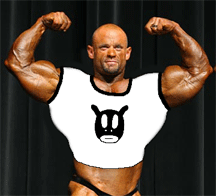
buff McAbbs looking like nobody else's business
****update: If you like maps that make some sort of sense and help you find things, you can download a pdf for the Alley Jaunt here.
Alpha Beta Data
Stephen Andrews, Robert Bean, Michelle Gay,
Vid Ingelevics, Carol Laing, Yam Lau,
Michael Maranda, Lorna Mills, Cheryl Sourkes
akau inc. 1186 Queen Street West, Toronto

August 5, 2006 – September 2, 2006
Opening event: August 11, 7:00 PM
Alpha Beta Data is an exhibition of work that contains written language, a contemporary update of an eternal practice. As a form of mark making, writing as such has always existed in the realm of the visual. The modern alphabet routes back through Greek, Hebrew and Phoenician to iconographic Egyptian Hieroglyphics. Letters began as pictures: A derives from the head of the ox, N from the shape of the snake, O from an open eye, etc. Artists and artisans have always integrated pictures and letters into scrolls, tablets, monuments, wall decoration, etc.As you can see from my video still image on the right side of the graphic, you can take me anywhere, sort of, including this very elegant exhibition that Cheryl Sourkes has organized.
Each artist in Alpha Beta Data uses script in their work, but each engages with it differently. Some deal with meaning, others with the symbolic or pictorial nature of the letters and numerals themselves.
To make the drawings in Body Count, Stephen Andrews isolated numbers of casualties from front-page headlines in the watershed year that followed 9/11. Robert Bean’s Études are scans of found typewriter exercises. His Folds are photographs of Études, which have been crumpled. Michelle Gay’s Experiments with a Reader uses original code to drive computer animation, interactivity and audio components. LoopLoop (from this series) is an interactive poem. Vid Ingelevics’s short video piece, Common Birds of Southern Ontario brings the ‘sound poetry’ of transcribed birdsong to the screen. Carol Laing’s drawings of the Claudian Letters present symbols invented during the reign of the emperor Claudius, which were then discarded for two millennia, and now have been adopted for use in Unicode. To make In the River, North of the Future, Yam Lau had Paul Celan’s last poem, Rebleute Graben engraved on a hand-blown, glass bottle. Michael Maranda used his formalist eye to rearrange the contents of the philosophical texts of Immanuel Kant. Lorna Mills’s DVD English is an on-going digital documentation of the cover of every book she can remember reading, in her life … so far. To make the digital photographs Homecammer-Messages, Cheryl Sourkes immersed herself in streaming webcams and retrieved written communication that reaches out for love and sex.
I even represent well in austere grey-scale promotional material, so in keeping with my new rigorous image, my usual Google Earth! mapping of the event location has been desaturated. (but remains, like all my previous maps, quite unhelpful)

My piece, English - 2006 edition contains 2,480 images, each one on-screen for 2 seconds.
I am also available for dinner party conversation.
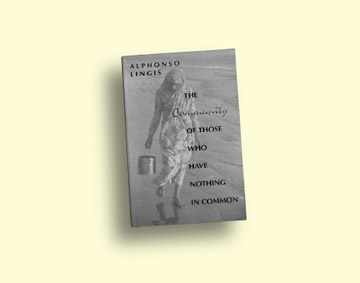
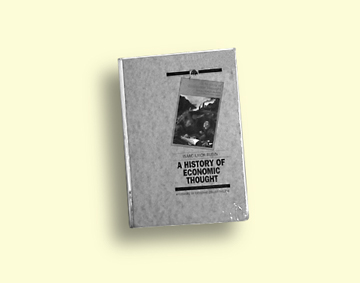
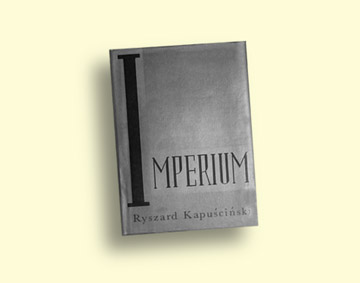
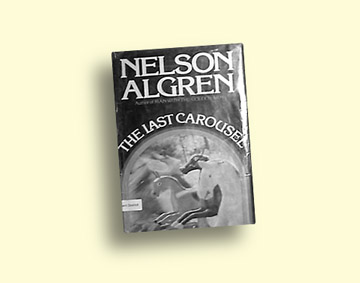
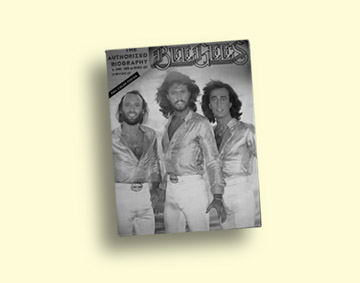
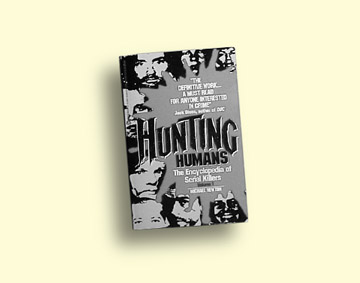
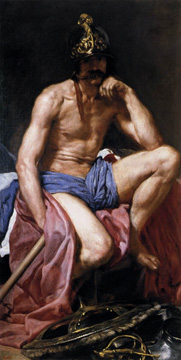
Mars, God of War - Velázquez
Reuter's well-publicized problem with a Photoshopping photographer, analysed here in detail and continuing conflicting reports on casualty numbers provide a good argument for multiple sourcing for information and in all fairness very few sane people have time for that.
And there is little shortage of opinion based on all this unreliable info. One article I read today was a scathing criticism of Lebanese leadership by Michael Béhé, The most hypocritical people on earth. It's not unreasonable for Béhé to demand an accounting from his government as to how Hezbollah managed to create its own state within Lebanon, but when his self-assured diatribe extends further on to statements like this, I am really appalled.
"All those who have not sided with terrorism know they have strictly nothing to fear from the Israeli planes, on the contrary! One example: Last night the restaurant where I went to eat was jammed full and I had to wait until 9:30 p.m. to get a table. Everyone was smiling, relaxed, but no one filmed them: a strange destruction of Beirut, is it not?All is right with the world when your fave restaurant is busy and nothing helps your argument as much as trivializing other people's suffering.
Of course, there are some 500,000 refugees from the south who are experiencing a veritable tragedy and who are not smiling. But Jean Tsadik, who has his eyes fixed on Kfar Kileh, and from whom I have learned to believe each word he says, assures me that practically all the houses of the aforesaid refugees are intact. So they will be able to come back as soon as Hezbollah is vanquished."
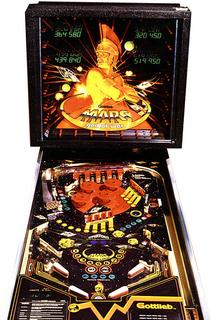
A different article, and an opposing POV, A Foolhardy Wars, Unleased by Fools by Eric Margolis contains this statement:
"A number of respected press agencies have reported the skirmish that triggered this war didn’t occur in Israel, as Israel claims, but just inside Lebanon."I read this same assertion several days ago, and at that time it was only attributed to one French blogger. Since then I have read multiple references to it always prefaced with: "some say...", "it has been reported in Europe that ...", etc. it's downright viral, but if it was slightly verifiable, you'd think that Al Jazeera would have led with it as a headline on day 1 of this war.
Those complaints aside, I did read Retaliation’s Mutual Injustice by Pierre Tristam posted on his site Candide's Notebooks.
Elsewhere on his site, he wrote this intro to two responses on a previous essay of his:
"The focus on Lebanon in the last three weeks has generated what no discussion about the Levant has managed to avoid since the third day of creation (did God create oranges first that day, or lemons? Citrus groves have been waging their own intifadas over that one ever since). Namely: disagreement. I post here two of the more compelling recent comments, one by an American married to a Lebanese Christian, disagreeing with my characterization of Hezbollah as, among other things, a Shiite Taliban. The other, by one of our friends at Jewlicious, disagreeing with my take on Israeli designs as described in yesterday’s piece. I don’t think anything said in these letters in invalid, which reinforces a point essential to an eventual peace, if we’re ever to have it in Lebanon and the rest of the place still embarrassingly called Holy: differences of opinion and interpretation are not barriers to co-existence. They’re only proof that pluralism needn’t be lovey dovey to be civil, and even—as in a Pirandello play, but with real lives at stake—to find a common stage.
Pierre Tristam just won me over and I haven't even read the original essay yet.